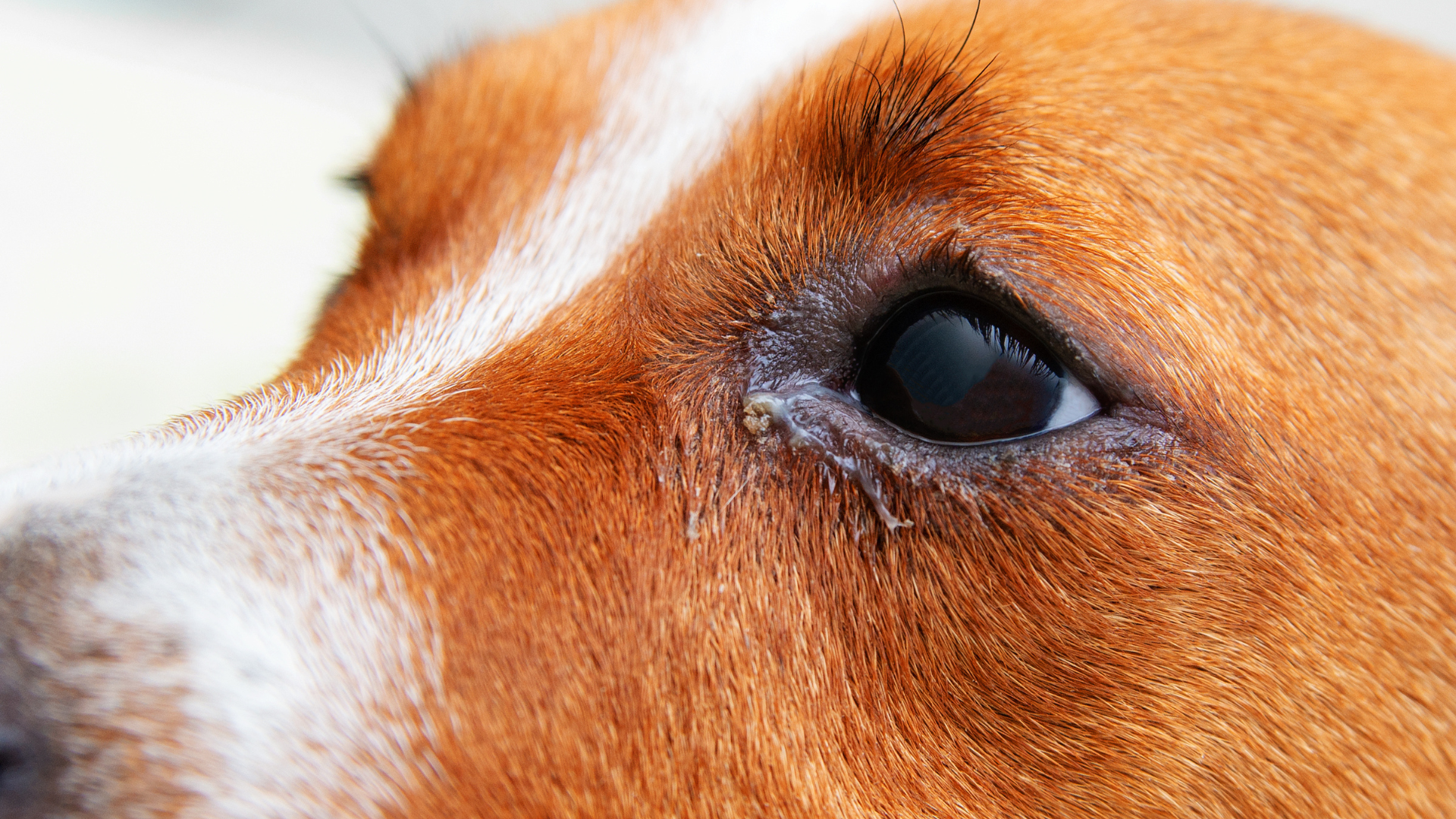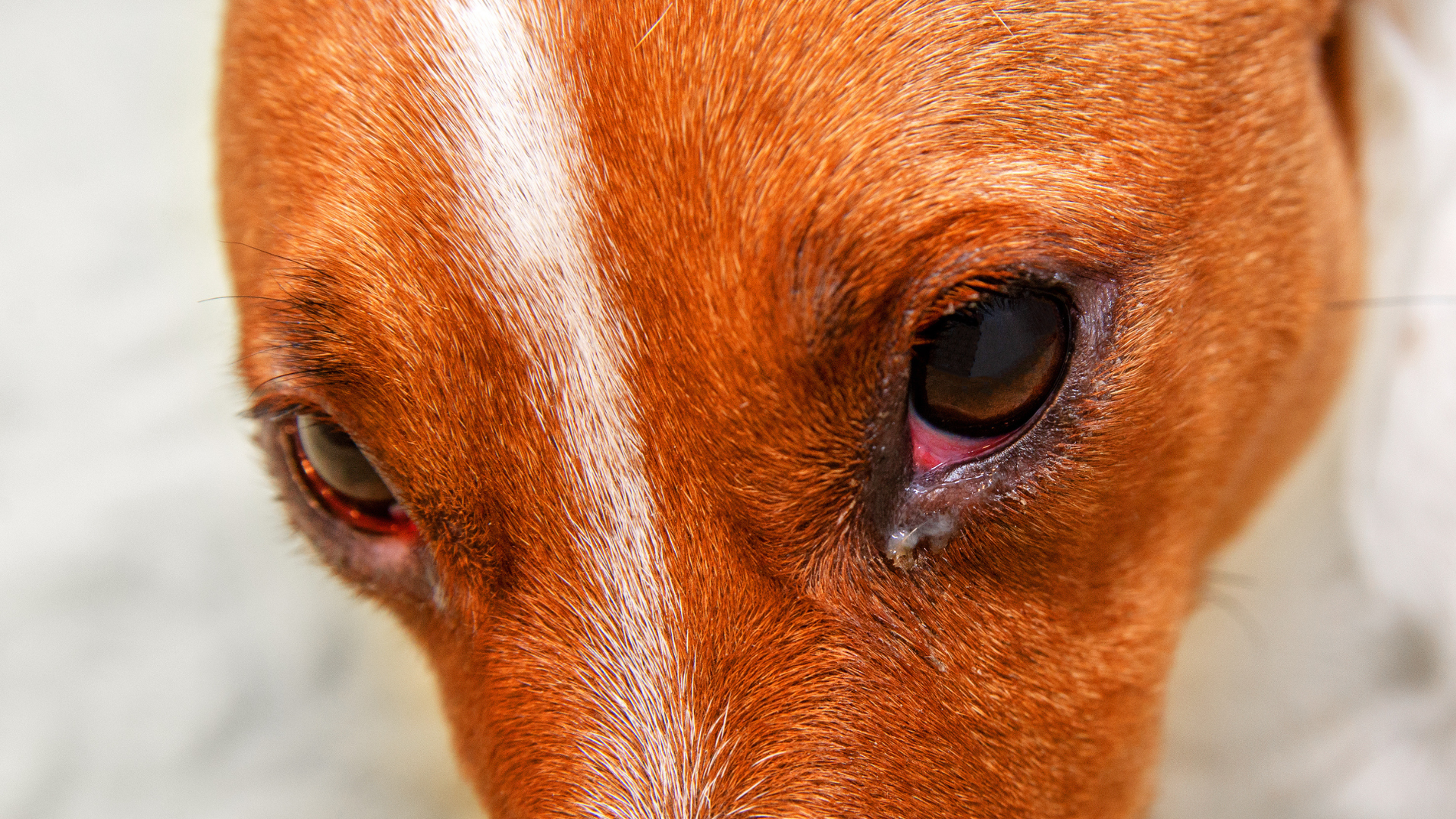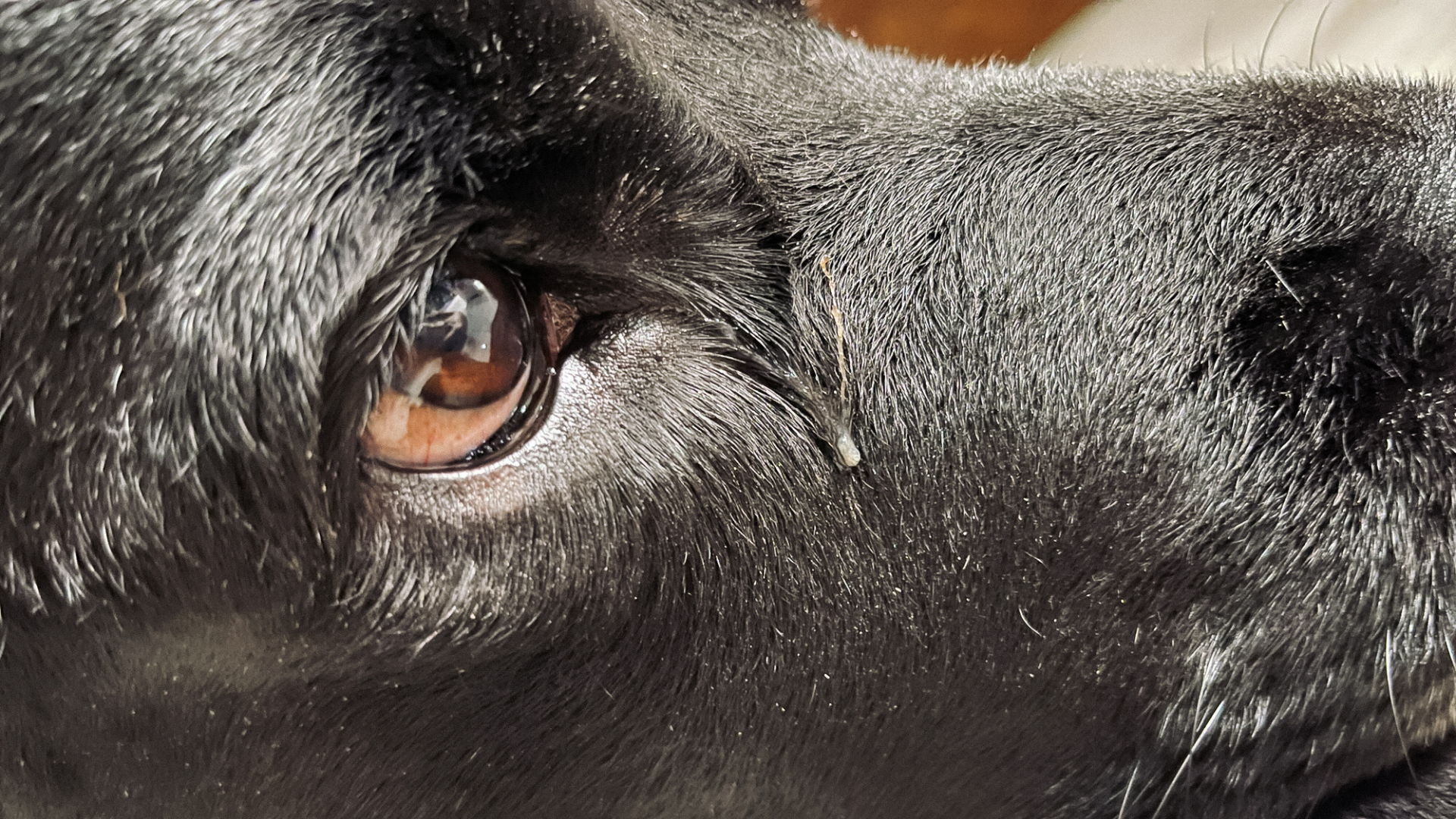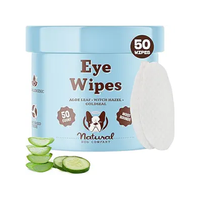Eye discharge in dogs: Types, causes and treatment, according to a vet
If you’re worried about eye discharge in dogs, here’s what it means and when to see a vet.

Eye discharge in dogs is very common and isn’t always something you need to worry about. If it’s clear and thin or there’s a small amount of mucusy discharge, it’s totally normal and doesn’t require a vet appointment.
However, if it’s a different color or there’s more than usual, it could be a sign of infection and it’s worth getting your dog checked out. There are lots of potential causes (which we’ve listed below) and some of the common allergies in dogs could be behind it.
With the help of expert vet Dr. Ruth Cawston, we’ve explained what each type of eye discharge means and how it can be treated. Ruth has also shared her top prevention tips and when it’s time to visit the vet.
Is eye discharge in dogs normal?
Eye discharge in dogs can be quite normal. However, if the amount suddenly increases or changes color, then this can be a sign that something is wrong.
What does normal dog eye discharge look like?
Normal discharge from dogs’ eyes usually looks like tears – thin, runny, and clear. Sometimes this will then dry out and form small crusts at the corner of dogs’ eyes.
Occasionally, dogs can have some mucusy discharge, which is thicker and may be clear, cream, or yellow in color. A small amount of this discharge can be normal, but larger amounts may suggest that there is a problem.
Causes of eye discharge in dogs
There are many different causes of eye discharge in dogs. These can include:
- Infections (bacteria or viruses)
- Trauma
- Allergies
- A blocked tear duct
- “Dry Eye” (Keratoconjunctivitis Sicca)
- Corneal ulcers (serious damage to the surface of the eye)
- Uveitis (inflammation within the eye – which can be a sign of serious illness)
Types of eye discharge in dogs
Eye discharge in dogs can come in lots of different colors and these can mean different things!
Clear discharge
Can look a lot like normal tears. However, some conditions (like allergies or viral infections) will cause dogs to over-produce tears, leading to this clear, runny discharge.
Red-eye discharge
Can be seen if there is bleeding in or around your dog’s eye. This usually happens after trauma and does not always mean that there is an infection present in your dog’s eye.

White, cream discharge
Can sometimes be normal in small amounts, but in large quantities it can be caused by infections, trauma, or “dry eye” – an autoimmune condition where dogs stop producing tears properly, leading to infections and damage to the surface of the eye.
Yellow discharge
Usually means that inflammation or infection is present, as the yellow color may come from the net
Green eye discharge
Is very common when dogs have a bacteria infection in their eye and is usually thick and sticky. It can also be seen with other conditions such as Dry Eye and corneal ulcers. It usually means that there is serious inflammation within the eye, so dogs with green eye discharge should always be seen by a veterinarian.
Fluorescein – a dye used by vets to look for damage to the surface of the eye – also turns green, and can make your dog’s eye discharge change color, too. So, if your dog has green eye discharge straight after coming back from the pet clinic, then it may be nothing to worry about – but do call and check with your veterinarian!
When should I be concerned about my dog’s eye discharge?
If you have noticed some discharge from your dog’s eye, it can be hard to know whether to worry or not.
You will usually need to see your veterinarian to work out the cause of your dog’s eye discharge, so here are a few things that signal it might be time for a trip to the vet.
You should see a vet if one or more of these is true:
- Your dog has yellow, green, or red discharge
- Your dog has more eye discharge than normal – even if the discharge looks the same
- Your dog is pawing at their eyes or rubbing their face along the floor or across the furniture
- There is swelling around your dog’s eye
- Your dog is holding the eye partly or fully closed
- You can see something trapped in your dog’s eye
- There is a bump, dip, scratch, or other change to the surface of your dog’s eye
- You can see small blood vessels growing across the surface of your dog’s eye
If you don’t see any of these signs but your dog’s eye still looks different than normal, then you should still make an appointment with your vet.

Does discharge mean my dog has an eye infection?
Eye infections are one of the causes of discharge from dogs’ eyes, but there are many other things that can cause this, too. Some eye conditions that look similar to infections– such as corneal ulcers – need to be diagnosed quickly, or your dog may risk losing their sight or even needing to have the whole eye removed.
This means that it is important not to just assume that your dog has an infection – make sure they are checked out properly by a veterinarian.
Treating dog eye discharge
If your dog has regular eye discharge, or some crusting at the corner of the eyes, then you can clean around their eyes to keep them comfortable. To do this, you can use some cotton wool and some water that has been boiled ad then allowed to cool.
Dip a small piece of cotton wool in the water and then gently wipe over your dog’s eye to loosen and remove the discharge. Be sure to clean your hands both before and after doing this to prevent transferring bacteria between yourself and your dog’s eye.
If your dog’s eye is sore, or they have thicker discharge that is yellow, green, or red, then you will need to see your vet for diagnosis and treatment. Home remedies for dog eye infections are usually not effective and can leave dogs in pain whilst they wait for proper treatment.
How to prevent dog eye discharge
A small amount of discharge from dogs’ eyes is normal and often cannot be prevented. However, if your dog regularly gets crusty eyes, then you can prevent this by bathing their eyes daily with some damp cotton wool.
Some dogs are prone to conditions that lead to eye discharge – especially brachycephalic (flat-faced) dogs whose eyes may protrude further than normal.
When buying a puppy, make sure to choose one whose parents do not have these protruding eyes, as this may prevent your puppy from having problems when they are older.
If your dog has a health condition that causes eye discharge – such as dry eye or allergies – then it is important to see your vet regularly and follow their advice on treatment. Otherwise, these conditions can lead to inflammation and scarring of the surface of the eye, which is painful and may affect your dog’s vision.
To learn more about eye health, read our vet’s guide on glaucoma in dogs.
These natural wipes will help to keep your dog's eyes clean and contain soothing aloe vera. They're lick-safe, eco-friendly and cost under $12.
PetsRadar Newsletter
Get the best advice, tips and top tech for your beloved Pets
Ruth has been a small animal GP vet for 10 years and is particularly interested in internal medicine. She graduated from the University of Cambridge in 204 and has a certificate in Small Animal Medicine. Whilst she loves all kinds of animals, she has a soft spot for cats.
- Megan MilsteadStaff Writer

